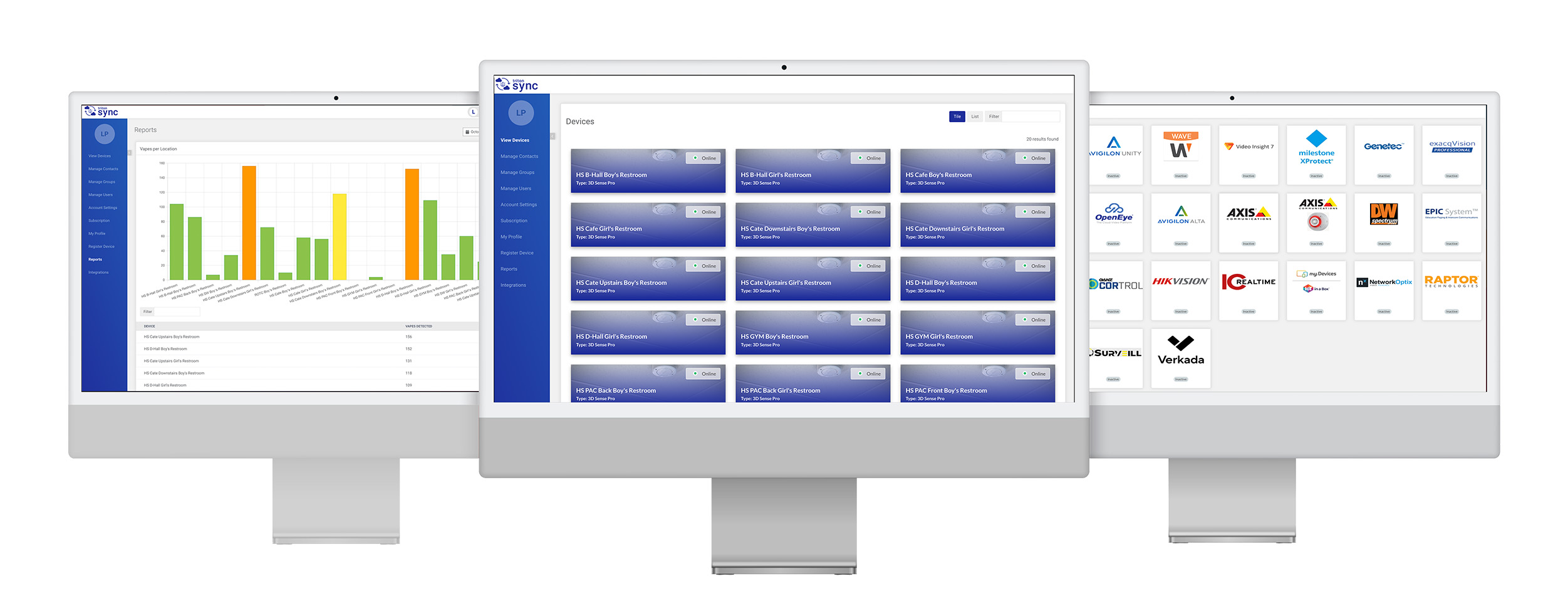Vaping was once a scourge at schools. Students would sneak in the bathroom between classes and inhale flavor tobacco vapors and nicotine. Administrators and teachers were left in the dark until districts turned to a vape detection system.
Today, schools across the country report major successes, which show how technology can help transform the issue of vaping.
A Case Study: Cutting the amount of vaping by 83% over 10 Weeks
Luling Independent Schools District had the most serious issue of vaping. Despite repeated warnings, and more stringent regulations, students were still able to smoke in lockers and bathrooms rooms. Smoke alarms aren’t effective against vapor, and staff could not be everywhere at once.

To test the system as a test, the district put in vape detectors in the schools during March. The results were stunning. The number of incidents of vaping dropped significantly within five weeks. At the end of 10 weeks, vaping had dropped by 83%.
For administrators, the results went beyond figures. Teachers were less disruptive, and students realized that vaping could not go unnoticed.
Similar Results Similar Success Match Charter Schools
Match Charter Schools is another impressive illustration. They struggled to curb smoking vapes in high and middle schools. The effect of the vape smoke detectors that they put in place in August was immediately felt.
In December, only four months after the first report, administrators revealed an 80percent decrease in vaping incidents. Parents applauded their school for taking action to protect children. Teachers also observed an improvement in the amount of hallway loitering and bathrooms crowded.
These two districts represent what is now a rising tendency: schools that implement vape detection are seeing tangible improvements in both behavior and overall safety.
What are the factors that make vape detectors efficient?
This technology is the main reason for these results. Modern vape detectors are more than just detect the vapor. They also monitor the quality of the air and levels of occupancy and also send staff alerts in real time. That means administrators no longer have to rely on guesswork or reports based on a post-factual analysis.
Even more important the fact that detectors have been designed with the privacy of the user in mind. No cameras. No audio recording. Accurate, instant information is what’s needed to assist schools in making swift decisions without compromising students’ rights.
This combination of effectiveness and adherence makes vape detection one of the most effective safeguards that schools can implement now.
The Safety Net extends beyond Vaping
Many administrators are aware that detectors are not just for preventing vaping. Modern systems are able to detect loud noises and keywords that are related to vandalism and emergency situations.
The detector will alert staff if, for example students start lingering around a restroom. Staff members can be alerted instantly if someone shouts “help” or some other distressing keyword. In this manner, vape detectors for schools become part of a wider safety program that tackles the health risk and possible violence.
Why Boards and parents support Vape Detectors
Transparency is a benefit which is often ignored. Schools that use detectors are able to generate reports that clearly show patterns in vaping. These reports are made available to school boards, parents as well as community members, offering evidence that tangible steps are being taken.
Parents, particularly, are more than happy when they see tangible results. A vape smoke detector isn’t just catching students it’s protecting their health and reinforcing the message that vaping has no place in schools.
What should you learn You should learn: A well-tested path to follow
Vaping was a struggle that seemed to be invisible to schoolchildren for a long time. However, cases from districts across the country show otherwise. Administrators can identify incidents and discourage risky behaviors in real-time using a vape detection device. This helps create an environment that is safer for students.
The vaping epidemic isn’t quite over, but there is a shift in the trend. Schools that are investing in vape detection technology aren’t just reacting to a problem, they’re actively paving the way towards more sustainable future.
Conclusion
Technology is being used in schools across Texas from Texas to Massachusetts. Modern vape detectors do more than just sound an alarm. It alters the way people behave, builds trust, and provides a lasting solution to one of today’s most pressing student health challenges. If a school district is serious about safety school vape detectors are no longer an experiment they’re the norm.
